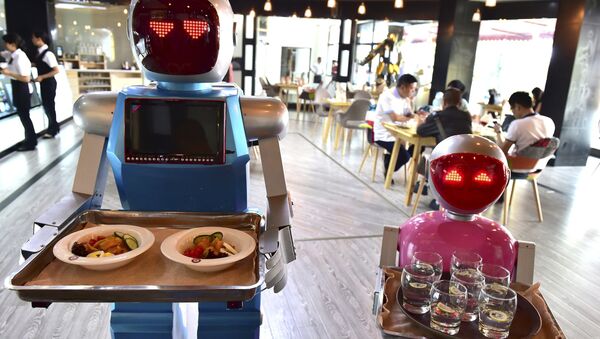History of robotics is actually thousands of years old. First, we need to understand the initial meaning of the word. It comes from the Czech word robota (which is translated as labor or, in this specific case, drudgery, and servitude).
It was first used in this meaning in the 1921 science-fiction play entitled R.U.R., or Rossum's Universal Robots. The author, Czech writer Karel Čapek actually attributes the invention to his brother, painter and writer Josef Čapek, who suggested a simple way of describing artificial servants created for the sole purpose of doing unimaginative work.
The idea of creating an artificial servant came much earlier. In fact, they date back to ancient myths, such as mechanical handmaidens built by the Greek god Hephaestus or clay golems of Jewish legends. Of course, there were no “robots” per se back then, but there automata, or automatons – the early cousins of the broad category of machines we currently call robots. In fact, the earliest automatons were built by ancient Greek engineers.
Ktesibios, the first head of the Great Library of Alexandria and an inventor, used "water to sound a whistle and make a model owl move. He had invented the world's first cuckoo clock", according to the book "The Rise and Fall of Alexandria: Birthplace of the Modern World" by Justin Pollard. Other Greek inventors continued dabbling with similar mechanisms – for example, Hero or Heron of Alexandria wrote on hydraulics, pneumatics, and mechanics described siphons, a fire engine, and a water organ.
The interest in self-operating machines, or a machine which follow automatically a predetermined sequence of operations, were not limited to Ancient Greece. Here’s an excerpt from a Chinese text written in the 3rd century BC, describing a meeting between King Mu of Zhou and an engineer known artificer Yan Shi – the meeting itself happened a few centuries prior.
The king stared at the figure in astonishment. It walked with rapid strides, moving its head up and down, so that anyone would have taken it for a live human being. The artificer touched its chin, and it began singing, perfectly in tune. He touched its hand, and it began posturing, keeping perfect time…As the performance was drawing to an end, the robot winked its eye and made advances to the ladies in attendance, whereupon the king became incensed and would have had Yen Shih [Yan Shi] executed on the spot had not the latter, in mortal fear, instantly taken the robot to pieces to let him see what it really was. And, indeed, it turned out to be only a construction of leather, wood, glue and lacquer, variously colored white, black, red and blue.
So where exactly are we going with this? Although first automatons were little more than peculiar toys or basic mechanisms, their future was recognized a long time ago. Nikola Tesla once said:
I actually constructed ”robots”. Today the robot is an accepted fact, but the principle has not been pushed far enough. In the twenty-first century the robot will take the place which slave labor occupied in ancient civilization. There is no reason at all why most of this should not come to pass in less than a century, freeing mankind to pursue its higher aspirations.
And, what do you know – the prediction of one of the most notable inventors of the 19th century came true. In less than a century robotics became a booming industry, paving the way to a more efficient future.

